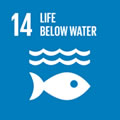Por favor, use este identificador para citar o enlazar a este item:
http://hdl.handle.net/10261/341349COMPARTIR / EXPORTAR:
 SHARE SHARE
 CORE
BASE CORE
BASE
|
|
| Visualizar otros formatos: MARC | Dublin Core | RDF | ORE | MODS | METS | DIDL | DATACITE | |

| Título: | Recovery and restoration potential of cold-water corals: experience from a deep-sea marine protected area |
Autor: | Strong, James Asa; Piechaud, Nils; De Clippele, Laurence H.; Bett, Brian J.; Horton, Tammy; Corbera, Guillem CSIC ORCID; Huvenne, Veerle A.I. | Palabras clave: | Artificial reefs Cold-water coral Coral recruitment Darwin mounds Desmophyllum pertusum Habitat restoration |
Fecha de publicación: | nov-2023 | Editor: | John Wiley & Sons | Citación: | Restoration Ecology 31(8): e13970 (2023) | Resumen: | Cold-water corals (CWCs) are important species that provide habitat for other taxa but are sensitive to mechanical damage from bottom trawling. CWC conservation has been implemented in the form of marine protected areas (MPAs), but recovery from impact may be particularly slow in the deep-sea environment; consequently, the use of restoration techniques has been considered. To gain some insight into CWC recruitment and growth, in 2011 we deployed small seabed moorings in the Darwin Mounds MPA (~1,000 m water depth). This site hosts hundreds of CWC mounds, that had previously (until 2003) been impacted by deep-water trawling. In 2019, we carried out in situ visual surveys of these moorings and the surrounding seabed environment, then recovered two of the moorings. The mooring buoys, glass floats with plastic covers, were extensively colonized by a diverse epifauna that included the CWCs Desmophyllum pertusum and D. dianthus. The presence of coral recruits indicated that environmental conditions, and larval supply, remained favorable for the settlement and growth of CWCs within the MPA. Based on our observations, we consider four possible restoration methods, together with a “do-nothing” option, for the Darwin Mounds CWCs that have shown little, if any, natural recovery despite 16 years of protection. We conclude that seabed emplacement of high-relief artificial substrata is likely to be the most efficient and cost-efficient means of promoting enhanced recovery of the CWC | Descripción: | 13 pages, 5 figures, 3 tables, supporting information https://doi.org/10.1111/rec.13970 | Versión del editor: | https://doi.org/10.1111/rec.13970 | URI: | http://hdl.handle.net/10261/341349 | DOI: | 10.1111/rec.13970 | ISSN: | 1061-2971 | E-ISSN: | 1526-100X |
| Aparece en las colecciones: | (ICM) Artículos |
Ficheros en este ítem:
| Fichero | Descripción | Tamaño | Formato | |
|---|---|---|---|---|
| Strong_et_al_2023.pdf | 11,13 MB | Adobe PDF |  Visualizar/Abrir | |
| Strong_et_al_2023_suppl.docx | 2,01 MB | Microsoft Word XML | Visualizar/Abrir |
CORE Recommender
WEB OF SCIENCETM
Citations
1
checked on 22-feb-2024
Page view(s)
13
checked on 29-abr-2024
Download(s)
12
checked on 29-abr-2024
Google ScholarTM
Check
Altmetric
Altmetric
Este item está licenciado bajo una Licencia Creative Commons



